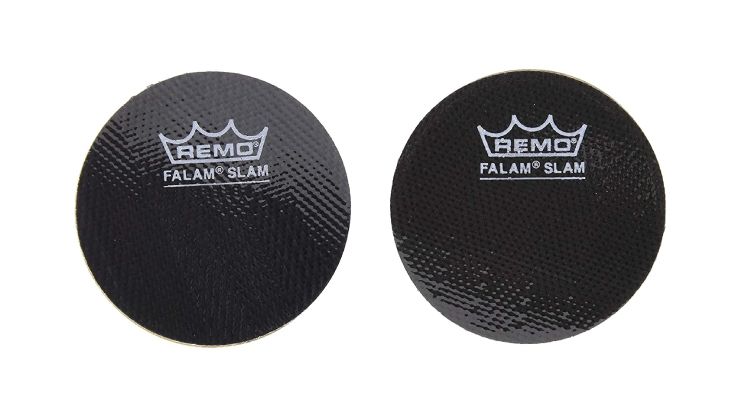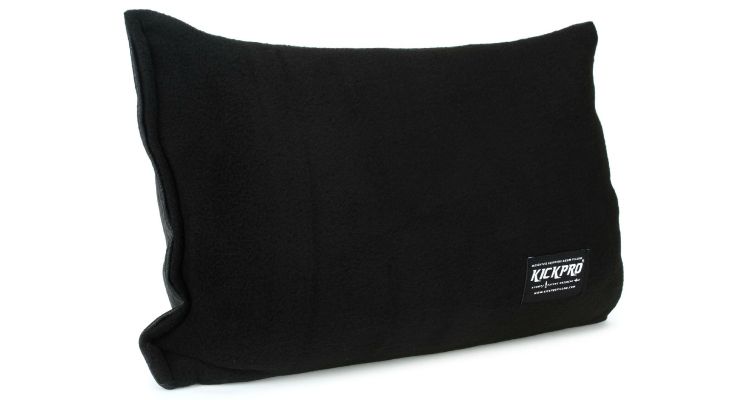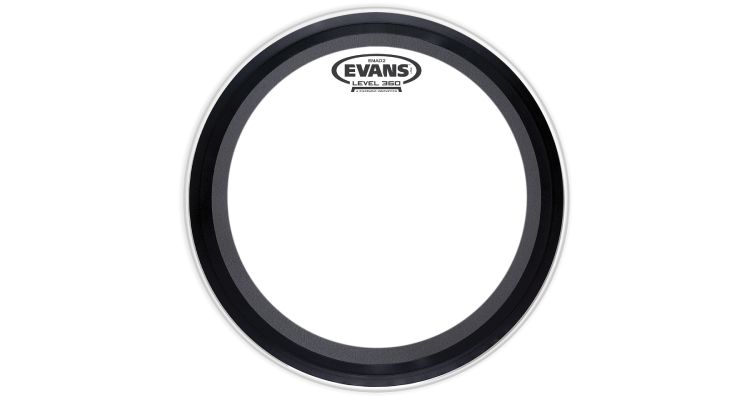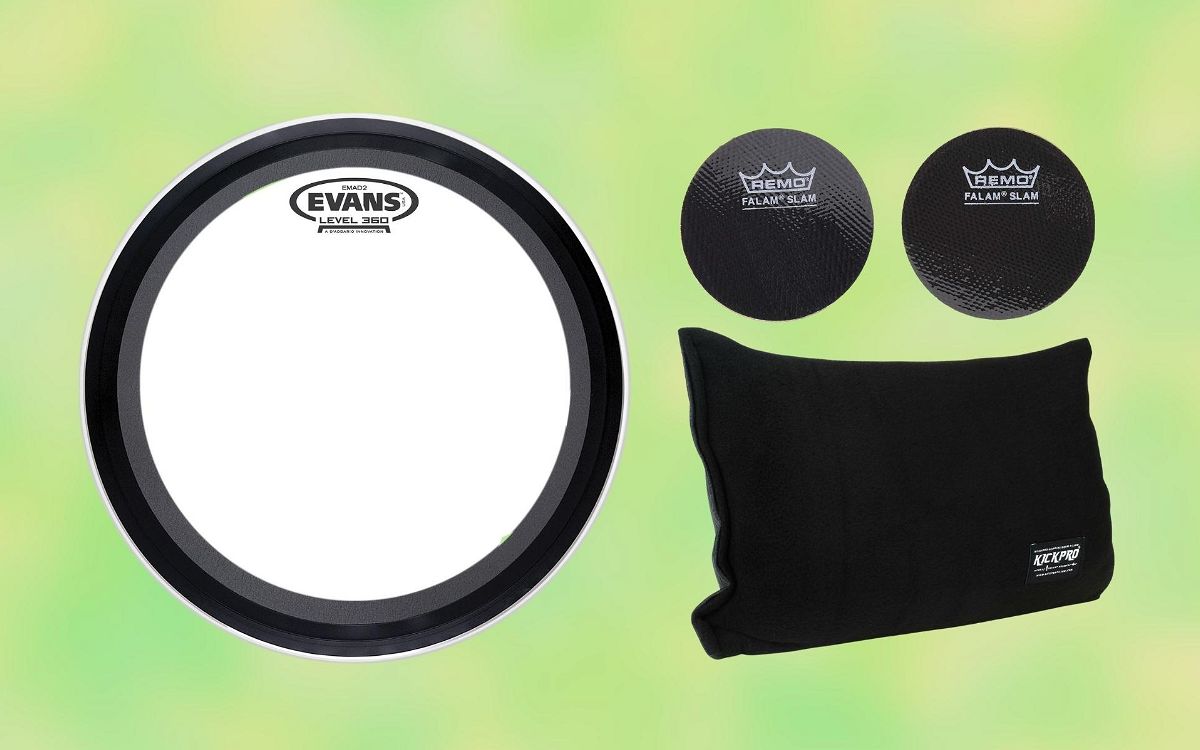Bass drum muffling techniques are something that every drummer learns along the way of their drumming journey. If you just bought your first drum kit, you may be wondering why your bass drum has such a long and booming tone.
If you don’t like it, you’ll need to apply a bit of bass drum dampening. In this guide, I’ll show you a few different ways of dampening your bass drum to get a tone that is both pleasing to the ears and not harmful to your bass drum.
Contents
Why Muffle Your Bass Drum?
Should you muffle your bass drum? That’s a question that many drummers find themselves with after getting their first drum kit. This depends on what sound you’re going for.
If you want a tight sound that is punchy and strong, you more than likely will need to add some dampening inside your bass drum to achieve it.
This especially important for capturing a great kick drum tone while recording drums with microphones in the studio.
If you want a bass drum tone that is open and resonant, applying muffling may just kill that tone.
Cheaper drum kits tend to have harsh bass drum tones, and muffling will make the drum sound a lot better whether you want an open or tight sound. That’s something else to keep in mind.
So, make a decision on whether you actually need to muffle your bass drum or not, and then move on to the next steps.
Things to Do Before Muffling Your Bass Drum
Tune the Batter and Resonant Heads
Before putting anything on or inside your bass drum, the best thing to do is tune the front and back heads. Most contemporary drummers prefer a low-tuned bass drum, particularly with a low tension on the batter skin.
Bass drums that are out of tune will have harsh or long overtones, and those are what you’ll try to get rid of with dampening techniques.
If you cut down on those overtones before dampening the bass drum, you won’t have to apply as much muffling, and that will give you a purer tone from the drum shell.
The best way to tune both drumheads is to finger tighten them all around, and then use a drum key tighten each lug slightly. With the lugs at a low tension, you should have a solid, thumping tone. If the lugs are uneven, you’ll get unwanted overtones.
If you want to have a higher-pitched bass drum sound, for example, for jazz drum sets, then you’ll need to apply a bit of dampening, as the overtones will come a lot easier with higher tensions.
Attach an Impact Patch

Sometimes muffling will give your bass drum stronger attacking sound. If you want that impactful sound from the bass drum beater but you still want the bass drum to resonate, you should attach an impact patch.
Impact patches will also protect your batter head from getting cracked by the constant pressure of the bass drum beater.
Once you’ve done those two things, you can move on to the muffling phase if you still don’t have the bass drum sound that you want.
Bass Drum Muffling Techniques
Towels
Towels are one of the best dampening tools you can use for a bass drum. They’re free, and they don’t take up a lot of space inside the drum.
The best places to put towels are right in front of both the batter and resonant heads. You can line them up so that they follow the structure of the bearing edges.
If you don’t want a lot of muffling, you can just lay a towel in front of the batter head. If you want a bit more dampening, you can place a second towel in front of the resonant head.
The downside of towels is that they’ll move around if you carry your bass drum. So, you’ll find yourself needing to rearrange them when setting your kit up in a new area.
The great thing about using towels is that it’s a free bass drum dampening method, as you can just use old towels that you have lying around.
Pillows

Pillows offer a lot more dampening than towels do, so they’re the next option if towels aren’t enough. They have more mass, so putting a pillow in bass drums will get rid of unwanted overtones a lot easier.
You can either use a standard pillow from your house, or you can buy a specially designed bass drum pillow from an established drum brand.
Standard pillows will work well if you don’t mind your bass drum being dampened a significant amount. If one doesn’t work well enough, you can just add another.
It’s better to use an optimized bass drum pillow, however, such as the KickPro pillow, which is designed to bring out certain tones from your drum. They’re also easier to position inside the shell.
Branded bass drum pillows also have designs that lock them in place, so they won’t move around while you’re transporting your drums.
Drumheads with Built-In Muffling

Another thing to consider is getting a batter head that has dampening built into it. The best example of this is the Evans EMAD. It has a foam ring built into it that controls overtones.
You won’t need to add as much muffling to a bass drum with this head as you would one with a standard head. Some bass drum batter heads even have switchable foam rings for varying levels of dampening.
Bubble Wrap
Using bubble wrap is an interesting bass drum muffling technique, but it works surprisingly well. Bubble wrap doesn’t have as much mass as pillows and towels do, so it doesn’t kill your bass drum’s natural tone as much.
Bubble wrap does do an excellent job of cutting out harsh frequencies, though. So, you’ll get plenty of resonance without any of the unwanted overtones.
The downside of using bubble wrap is that it doesn’t look great, and it will move about a lot. If you have a bass drum with a port hole on the resonant head, the bubble wrap will stick out like a sore thumb.
So, I’d only suggest using bubble wrap in your bass drum if it can’t be seen. It’s also worth trying before spending money on other dampening methods. That’s if you have bubble wrap lying around.
Remove the Resonant Head
Removing the resonant head is another option, but it’s effective in situations where you really need to cut down on unwanted resonance and overtones.
The reason it’s a last resort option is that it can damage the bearing edges of your bass drum. They’re left exposed with no resonant head resting on the drum. So, you should only utilize this method in very controlled environments.
You’ll often see drummers doing this with studio recording drum sets.
A good way of protecting your bearing edges is to cut out most of a resonant head. You’ll be able to attach it to the bass drum, but it won’t add any resonant tones. It just won’t look very tidy.
Tips for Bass Drum Muffling
Get Someone Else to Play Your Kit
When we listen to our bass drum, we’re mostly doing it from the perspective of our drum throne. The drums sound quite different when you hear them from the front.
So, it’s a good idea to get someone else to play your kit to hear what your bass drum sounds like from all angles. You may find that it doesn’t actually need as much dampening as you thought it did.
You should also do this when you’ve applied muffling, as you may find that you’ve killed too much of the tone by dampening the drum too much.
Use a Bass Drum Resonant Head with a Port Hole
One of the most frustrating things about muffling a bass drum is that you don’t have easy access to the inside of the shell. You may find the perfect spot for a towel or pillow, but it could easily move when you accidentally knock the bass drum.
If you don’t have a resonant head with a port hole, you’ll need to use a drum key to remove one of the drumheads to have access to your dampening tools.
So, having a resonant head with a port hole makes the whole process a lot easier. It’s still not very comfortable, but you can just stick your arm through the port hole to move everything around as needed.
Wrap Up
Drum kit muffling is a skill that takes time to develop and master. It sometimes takes even longer to perfect the art of bass drum muffling, as it’s such a large drum that can be quite difficult to control.
To give a quick recap on all the tips and methods from above, you should first tune your bass drum to the best of your ability.
After that, you can choose to use towels or a bass drum pillow. Using a bass drum pillow from a well-known drum brand is my preferred method, as it’s one that will give you the best results.
Once your bass drum is muffled, get someone else to play your kit so that you can listen and decide whether it’s muffled enough. If it’s muffled too much, you can move the dampening inside the shell around to get a different tonal outcome.









